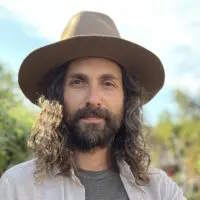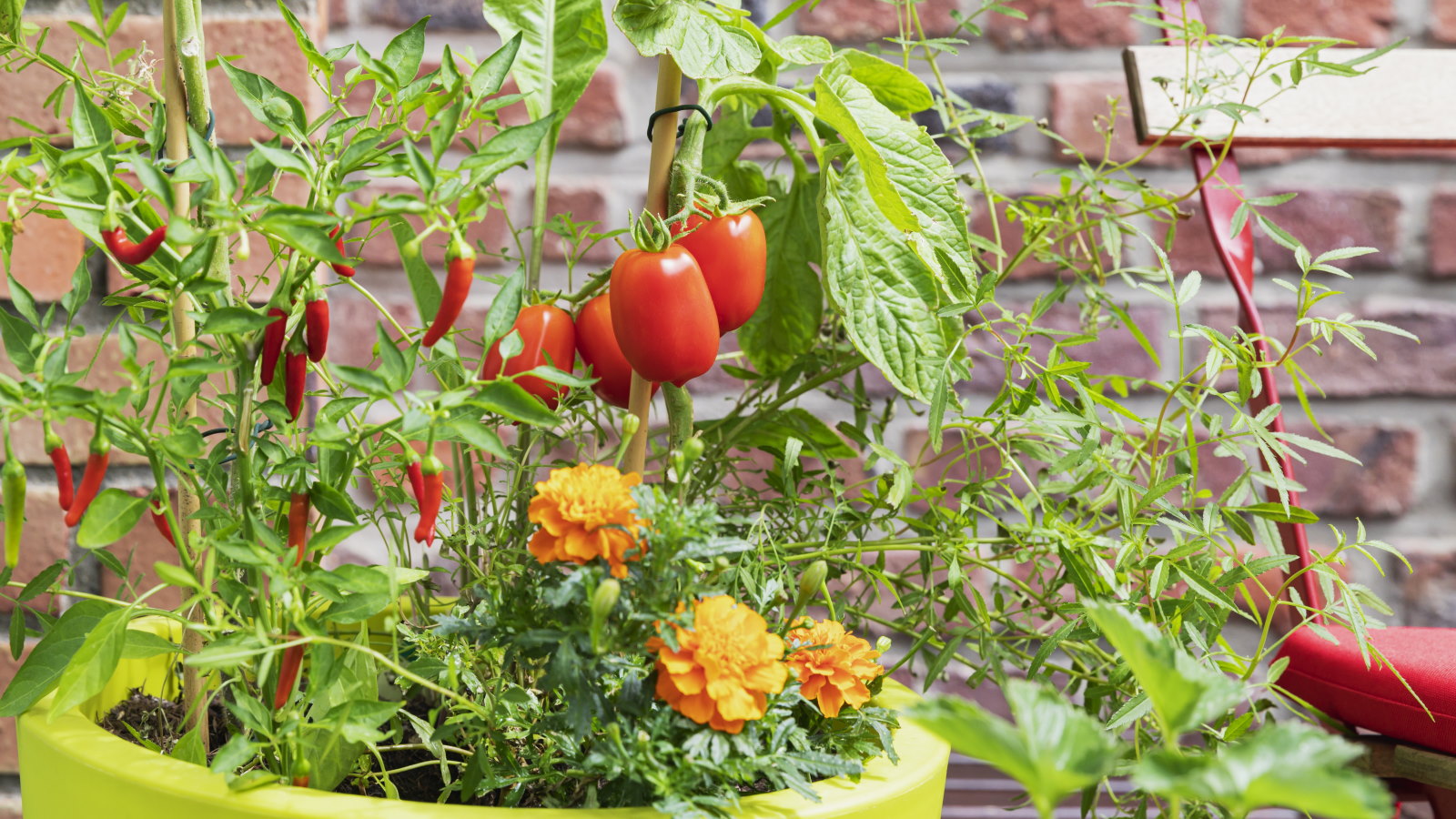When and how to harvest elephant garlic, along with how to cure and store the large bulbs
Don't forget you can get a delicious harvest of elephant garlic scapes, too


Elephant garlic produces large bulbs and cloves with a milder flavor than traditional garlic, and a hint of leeks or onions. Each bulb can give up to six cloves and elephant garlic offers a free second harvest in the shape of tasty scapes in early summer.
The plants need a long growing season to split into the sought-after cloves, needing to be planted in fall to give you a great harvest of baseball-sized bulbs come mid-to-late summer.
If you are new to growing elephant garlic, it may be tricky to know when the right time is to harvest the crop. Discover when and how to harvest elephant garlic together with how to cure and store the crop so you can enjoy your homegrown bulbs for many months.

How to tell when elephant garlic is ready to harvest
To help you understand when it is time to harvest elephant garlic, we look at the signs that show the moment is right and explain how to harvest the crop safely without damaging the large bulbs.
When to harvest elephant garlic

Elephant garlic is a type of garlic that has a long growing season and can take anywhere between 180-210 days to go from planting garlic in the fall to harvesting the bulbs the following summer. The crop can also be planted in the early spring and, in those circumstances, the days till you lift the bulbs drop down to around 90 days from planting.
Farmer Lee Jones, The Chef's Garden owner, explains: ‘Elephant garlic is typically harvested in late summer, mid-July or August, depending on your local climate and growing conditions.’ The conditions that may affect the garlic harvest, including the size of the bulbs as well as the date they are ready to be lifted, include your location, when they were planted, how the garlic was fertilized, and the weather conditions during the growing season.
It is relatively simple to tell when elephant garlic is ready to harvest and the proof is in the foliage. Once the foliage turns yellow or brown and starts to bend over in late summer, that is the sign to lift elephant garlic.
Elephant garlic will produce flower spikes in early summer known as scapes. These can be removed and eaten to focus energy back into developing the bulb. After flowering, once the foliage dies away at the end of the season from mid-July onwards, it is time to harvest elephant garlic.

Farmer Jones' Farm is part of The Chef's Garden, which was started by the Jones family more than 30 years ago in northern Ohio along the shores of Lake Erie. Lee Jones and Bob Jones, Jr. - following in the footsteps of their father, Bob Jones, Sr. - have been working tirelessly for many years to regeneratively farm the highest quality vegetables, herbs, and microgreens. For over 30 years The Chef's Garden has supplied some of the world's finest chefs and their restaurants with fresh vegetables and now those same vegetables are available to you at home
How to harvest elephant garlic

Lifting the crop is a very simple task for any level of gardener, though there are approved ways to harvest garlic to avoid damaging the bulbs. Farmer Lee Jones recommends using a pitchfork to lift the bulbs, though it can also be done with alternative gardening tools, including a small shovel, trowel, or border fork.
When you harvest elephant garlic, firstly loosen the soil around the base of the crop. Then insert the tool away from the bulb and gently lever the bulb from the soil. Shake off the excess soil and then you can either use the bulb or cure it to store for longer periods.
As mentioned above, there are ways of attempting to lift elephant garlic to avoid. For example, Matthew Geldin, Head Farmer at Farmscape, warns: ‘Don't just yank on the stalk when you pull out your garlic, use a soil knife or trowel to pry the roots free as you pull to ensure a clean harvest.’ Pulling the stems by hand is a vegetable harvesting mistake that risks damaging the bulb.
The largest bulbs are best cured and stored. Smaller bulbs that did not have a long enough growing season to split into individual cloves, usually ones planted in the spring, will be a monobulb. These can be left to continue growing where they are or replanted again in the fall to become a bulb next year, as part of any crop rotation plan.

Matthew is a co-owner of Farmscape and has managed maintenance across hundreds of projects over the last decade, from backyard gardens to neighborhood farms. He has a bachelor’s degree in Landscape Architecture from Cal Poly Pomona.
Shop harvesting tools

A soil knife with a 7.25 inch blade that can be used for harvesting, along with many other gardening tasks including weeding, planting, and cutting.
How to store elephant garlic

After harvesting, elephant garlic should be cured, or dried, as this can improve the flavor and storage life of the bulbs. Matthew Geldin says: ‘When you harvest garlic the outer skin of the head will be papery but there is still moisture in the cloves. The heads need to be stored in the shade for at least two weeks before you bring them inside to ensure a long shelf life.‘
Place the bulbs in a cool and dry place that has a good level of air circulation. They want to be spread out, not touching, and away from direct sunlight. The process can take 2-4 weeks, depending on the humidity.
After curing, the elephant garlic bulbs can be stored to be used as and when required for up to 10 months. Cloves can also be kept and planted again in the fall to provide a harvest next year.
How and when to harvest elephant garlic scapes

Garlic scapes are thick, spiral stems produced by the plants as they attempt to flower and go to seed. They tend to occur in June and can be cut off with a sharp knife as far back as their base.
Removing the edible scapes, which have a mild garlic flavor and can be eaten raw or cooked in many different ways, redirects the plant’s energy back into developing the bulb. The garlic scapes will not all appear at once, so regularly scour your kitchen garden to harvest the tasty free crop.
FAQs
Can you eat elephant garlic leaves?
Elephant garlic leaves are edible and have a milder taste than the bulbs. They can add flavor to many dishes or be used as a garnish.
You can replant bulbs from homegrown garlic to grow another crop next year, however, it is not advised to attempt to grow garlic from grocery store garlic. This is because you do not know the heritage of the garlic and there is no guarantee that it is virus-free. Seed garlic will be certified disease-free and comes with no risk of introducing diseases into your garden. You can see the range of seed garlic available at Burpee.
Sign up to the Homes & Gardens newsletter
Design expertise in your inbox – from inspiring decorating ideas and beautiful celebrity homes to practical gardening advice and shopping round-ups.

Drew’s passion for gardening started with growing vegetables and salad in raised beds in a small urban terrace garden. He has worked as a professional gardener in historic gardens and specialises in growing vegetables, fruit, herbs, and cut flowers as a kitchen gardener. That passion for growing extends to being an allotmenteer, garden blogger, and producing how-to gardening guides for websites. Drew was shortlisted for the New Talent of the Year award at the 2023 Garden Media Guild Awards.
-
 There's a rustic cottage hiding on Wayfair – it may seem unorthodox, but this tiny home taps into a growing nomadic trend (and it's under $16K)
There's a rustic cottage hiding on Wayfair – it may seem unorthodox, but this tiny home taps into a growing nomadic trend (and it's under $16K)This 'wonderful' wooden farmhouse perfects a growing trend that's changing how we see our homes – it's tiny, but somehow, it doesn't sacrifice comfort
By Megan Slack
-
 5 freezer cleaning mistakes you must avoid – or risk compromising your food quality and shortening the lifespan of your appliance
5 freezer cleaning mistakes you must avoid – or risk compromising your food quality and shortening the lifespan of your applianceAvoid these blunders for a safer kitchen
By Seraphina Di Mizzurati
-
 This $20 pop-up greenhouse from ALDI is perfect for small yards – it will turbocharge your tomato harvests this summer
This $20 pop-up greenhouse from ALDI is perfect for small yards – it will turbocharge your tomato harvests this summerEasy to use and compact to store, pop-up greenhouses are ideal for patio or balcony gardeners
By Thomas Rutter
-
 Small yard but want to grow your own crops? This wooden cold frame is 40% off at Wayfair – and it's perfect for tiny patios and apartments
Small yard but want to grow your own crops? This wooden cold frame is 40% off at Wayfair – and it's perfect for tiny patios and apartmentsCold frames are a sensible investment for any gardeners struggling for space on balconies, backyards or patios
By Thomas Rutter
-
 7 of the best tomatoes for growing in pots – expert growers pick their top varieties ideal for large harvests from containers
7 of the best tomatoes for growing in pots – expert growers pick their top varieties ideal for large harvests from containersYou can enjoy bumper homegrown harvests in small spaces
By Drew Swainston
-
 These 5 plants can help you get the best, and potentially tastiest, broccoli ever – discover what to plant with broccoli, and what to avoid
These 5 plants can help you get the best, and potentially tastiest, broccoli ever – discover what to plant with broccoli, and what to avoidOur selection of vegetables, herbs, and flowers is perfect for companion planting with broccoli
By Drew Swainston
-
 How to grow cabbages in containers – expert tips for top harvests in small urban spaces
How to grow cabbages in containers – expert tips for top harvests in small urban spacesYou can grow lots of different cabbages in pots, troughs, grow bags, or buckets
By Drew Swainston
-
 You'll get the best homegrown tomato crops if you plant them next to this one flower – discover why these two are a dream combination
You'll get the best homegrown tomato crops if you plant them next to this one flower – discover why these two are a dream combinationYour tomato plants will be pest-free and covered in fruits
By Drew Swainston
-
 Direct sowing vs transplanting – our grow-your-own expert advises which is best, and shares 5 veggies you should always sow directly
Direct sowing vs transplanting – our grow-your-own expert advises which is best, and shares 5 veggies you should always sow directlyBoth approaches to sowing vegetables have pros and cons
By Drew Swainston
-
 I grew rhubarb from seed for years – here’s exactly how to do it for guaranteed germination and healthy crops of fruit
I grew rhubarb from seed for years – here’s exactly how to do it for guaranteed germination and healthy crops of fruitGrowing rhubarb from seed is a cost-effective way to propagate plants, but it requires care and patience
By Drew Swainston

